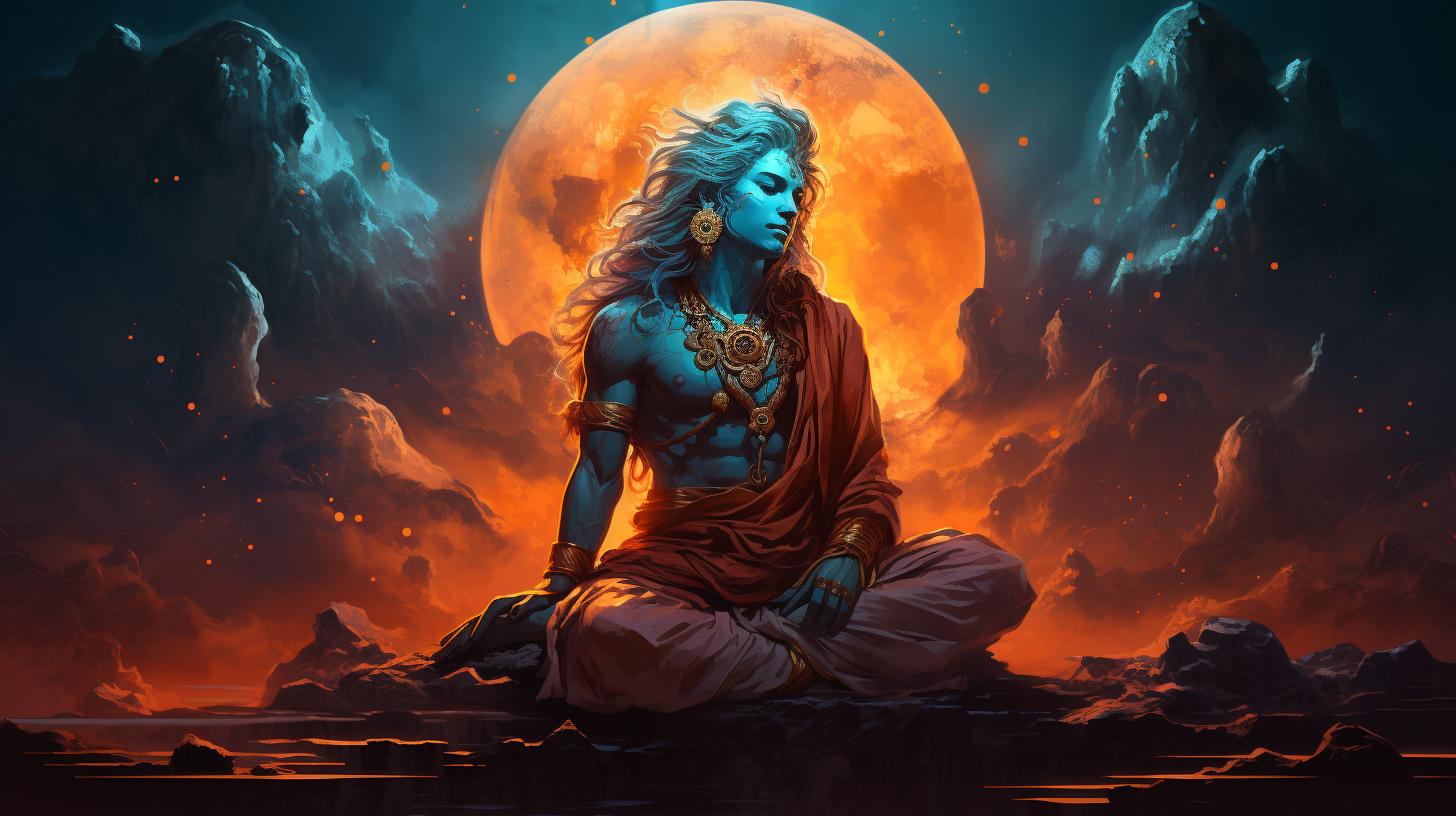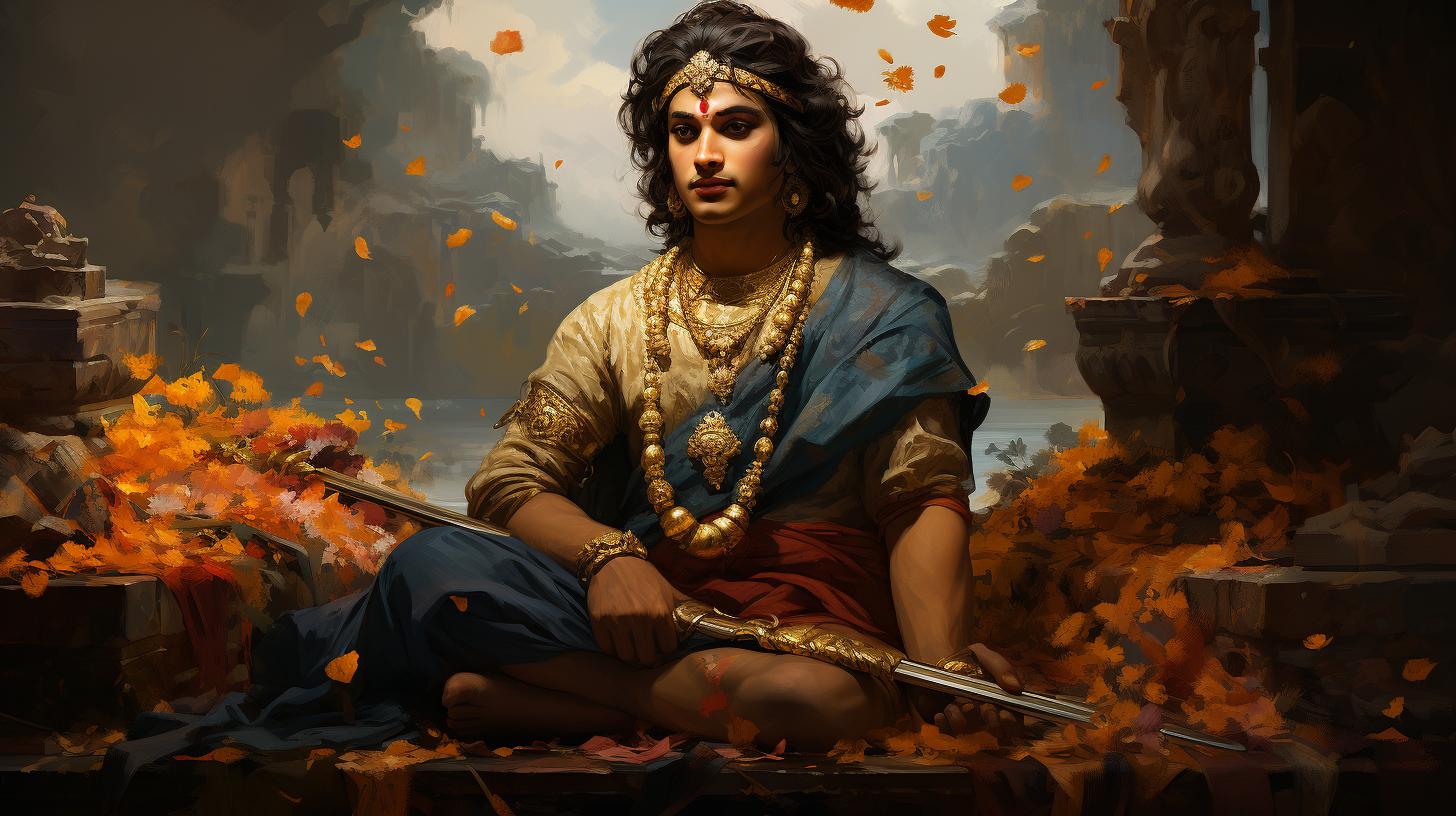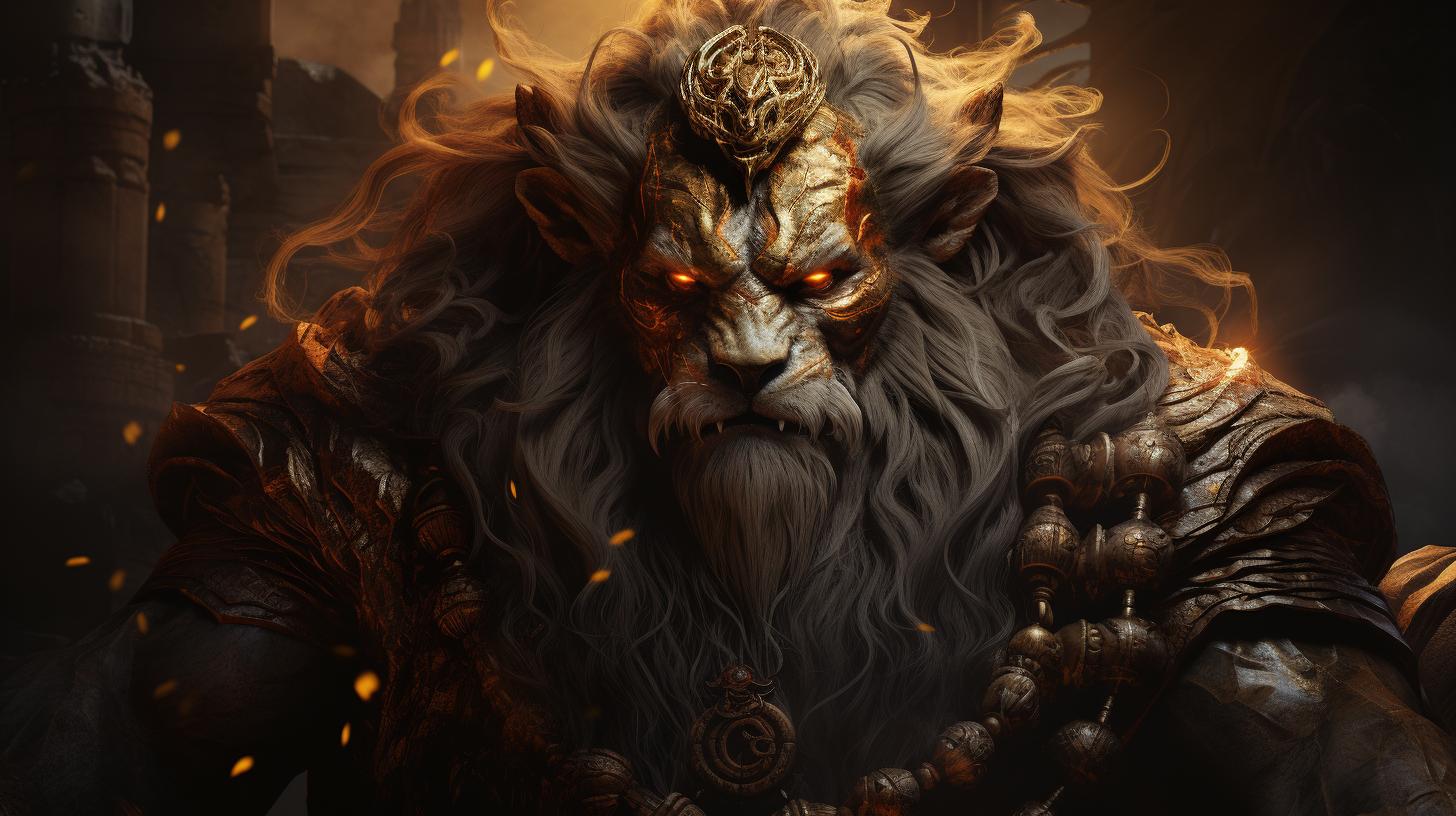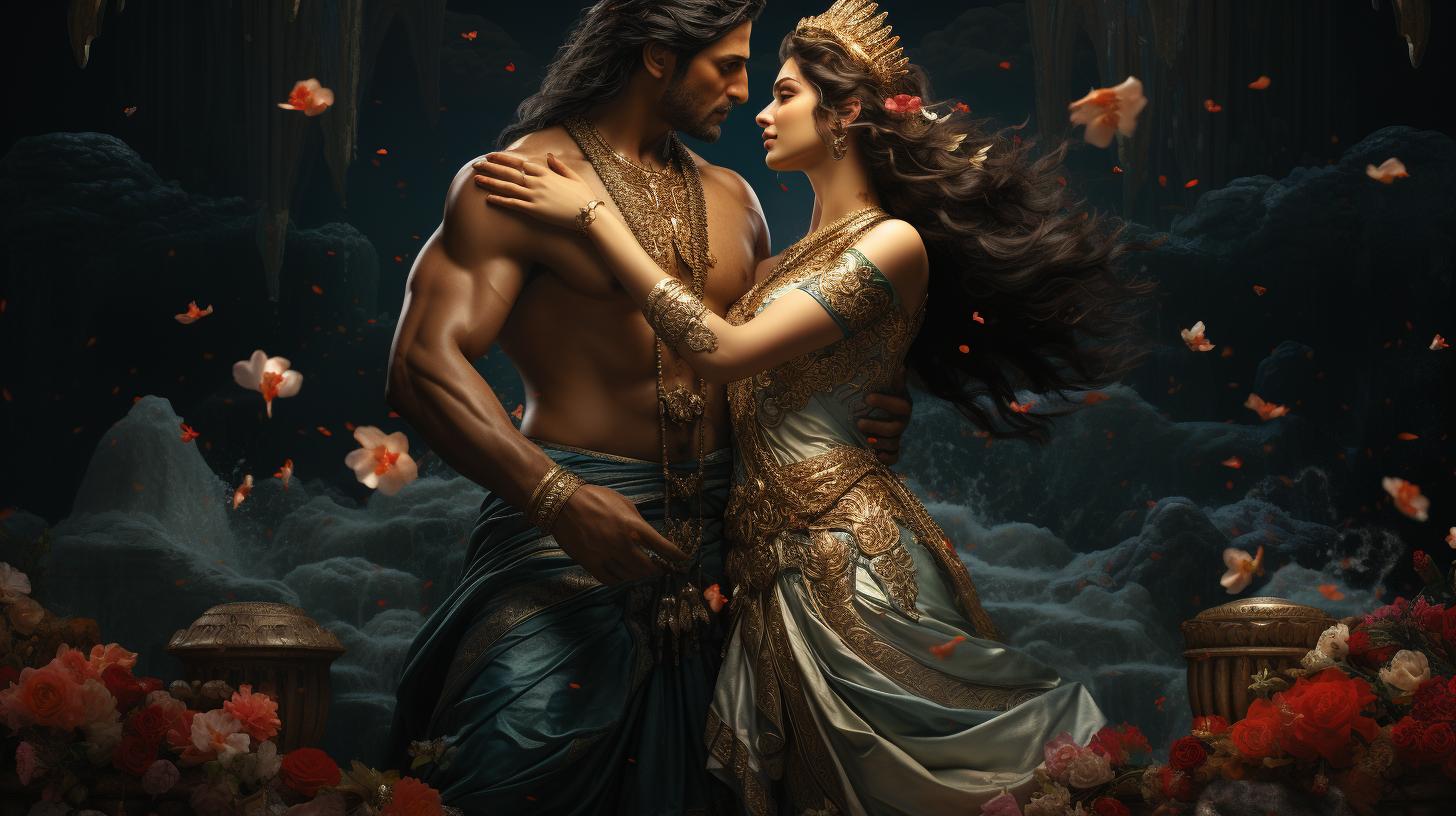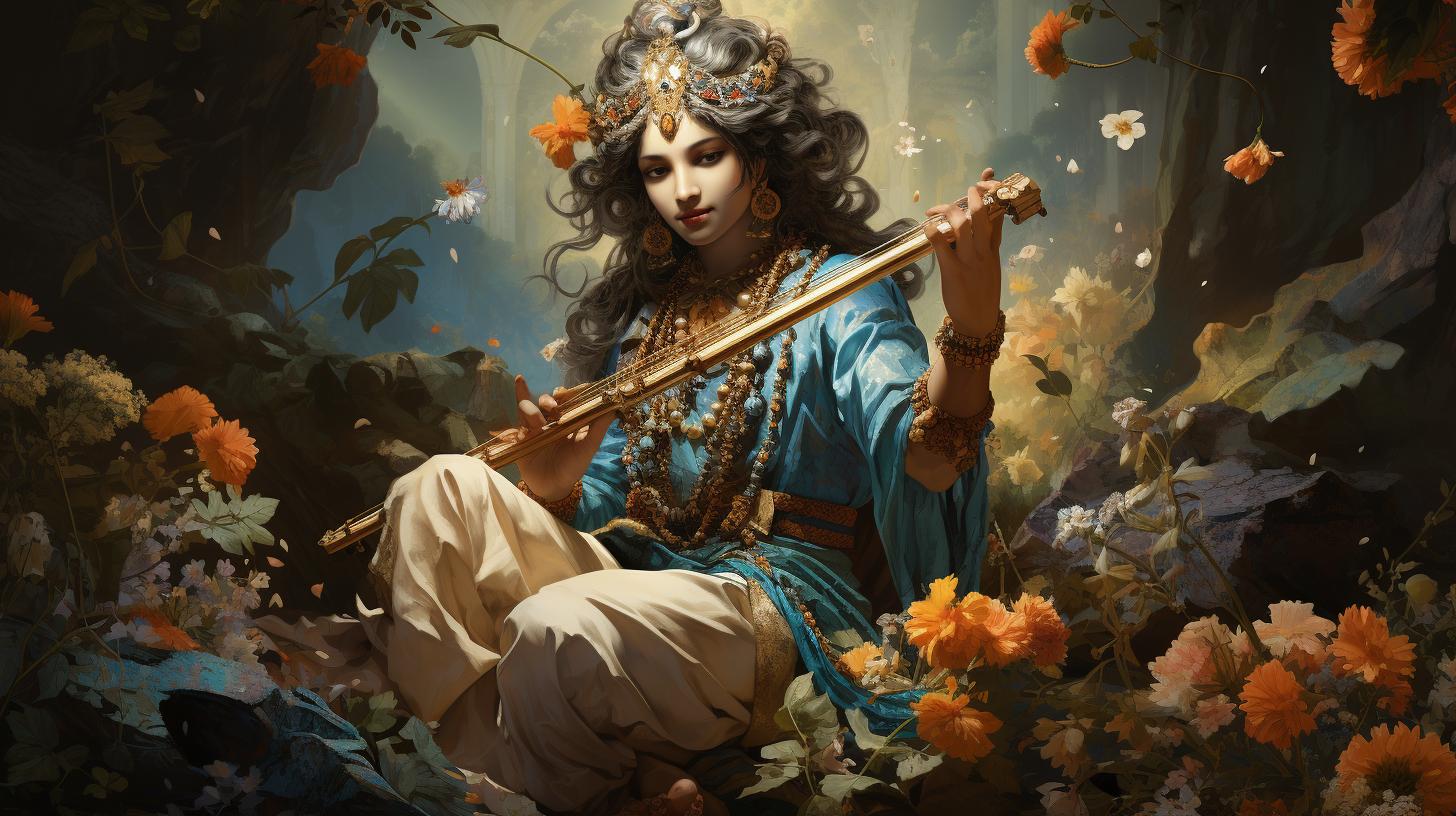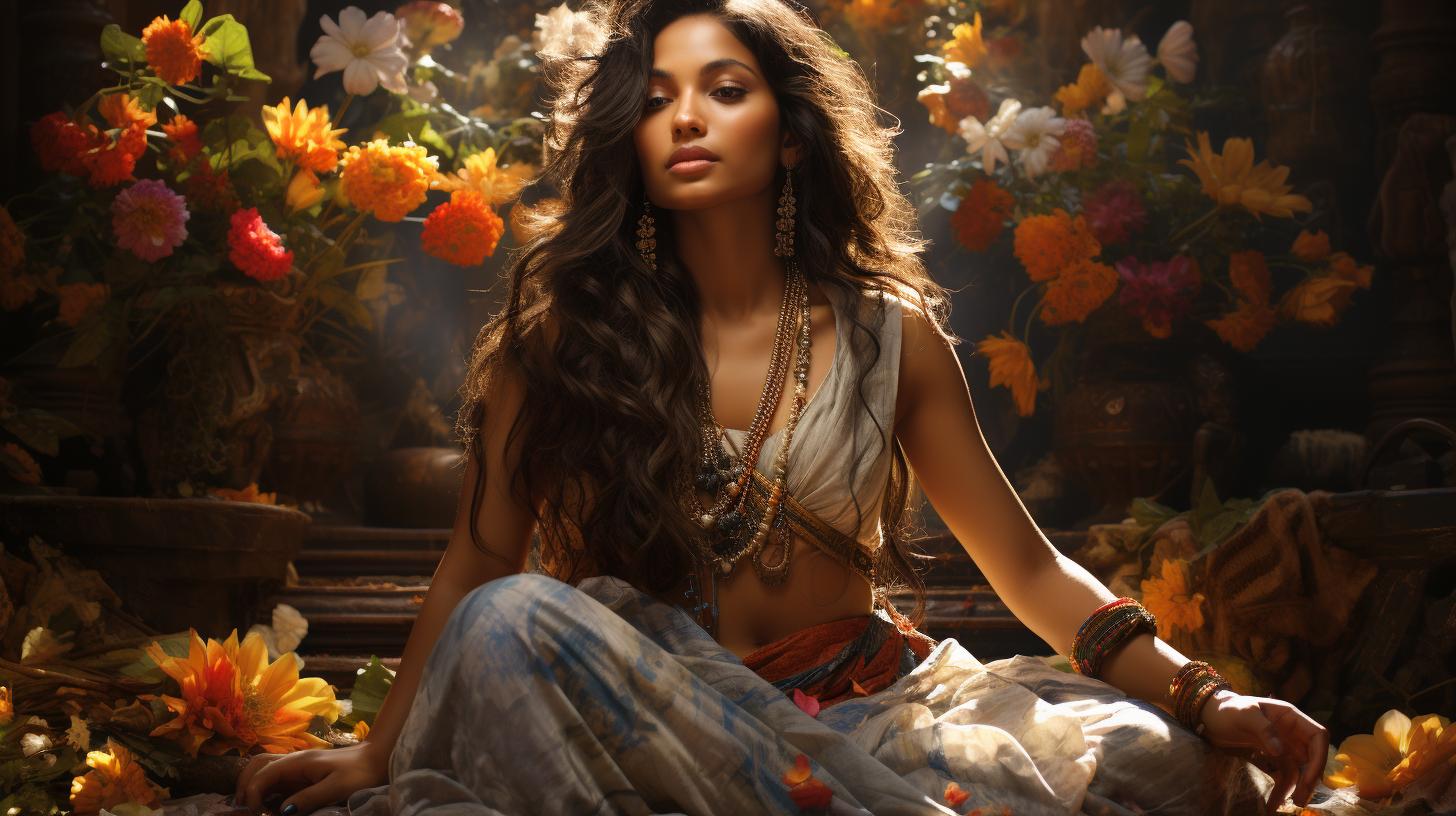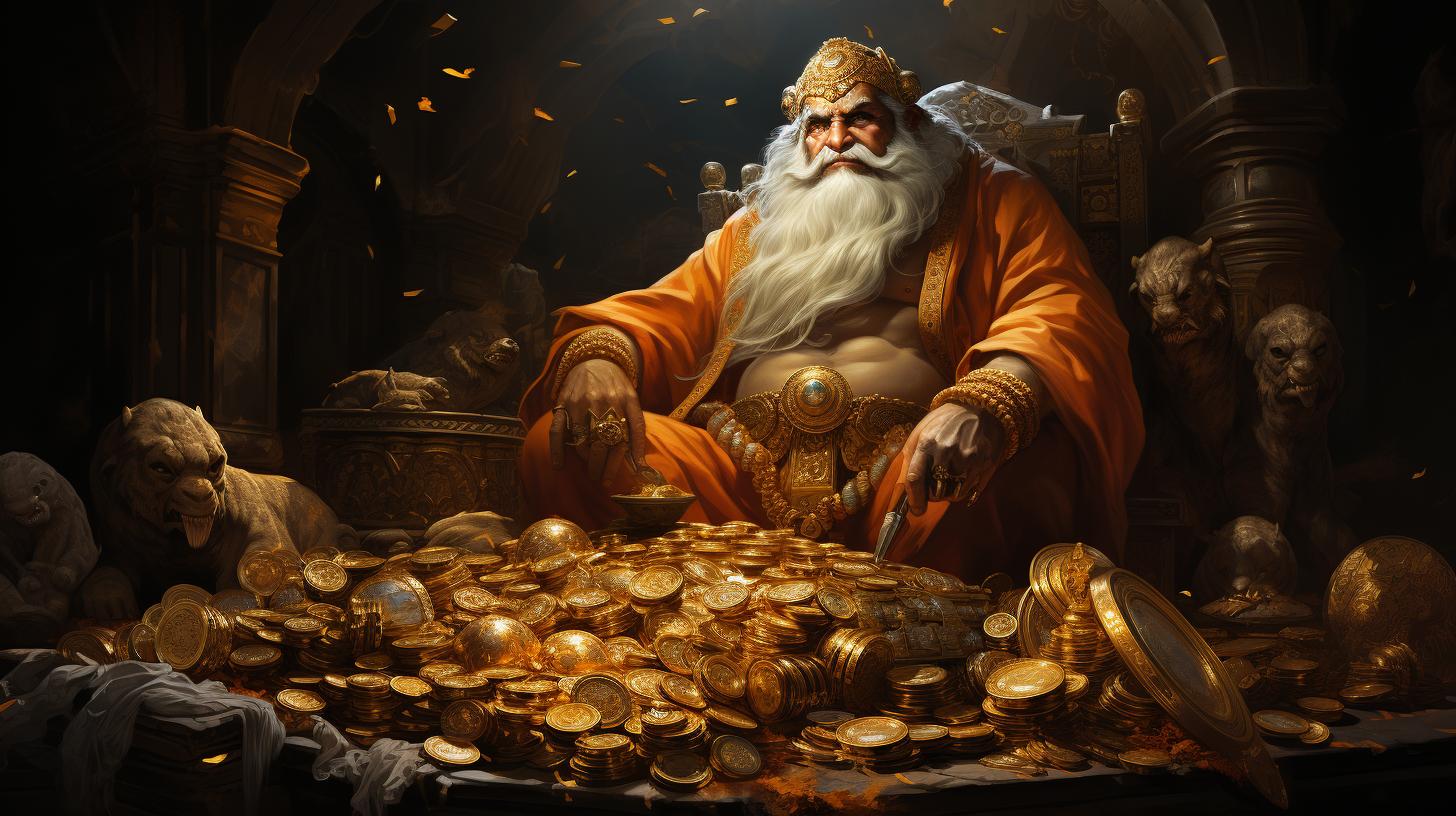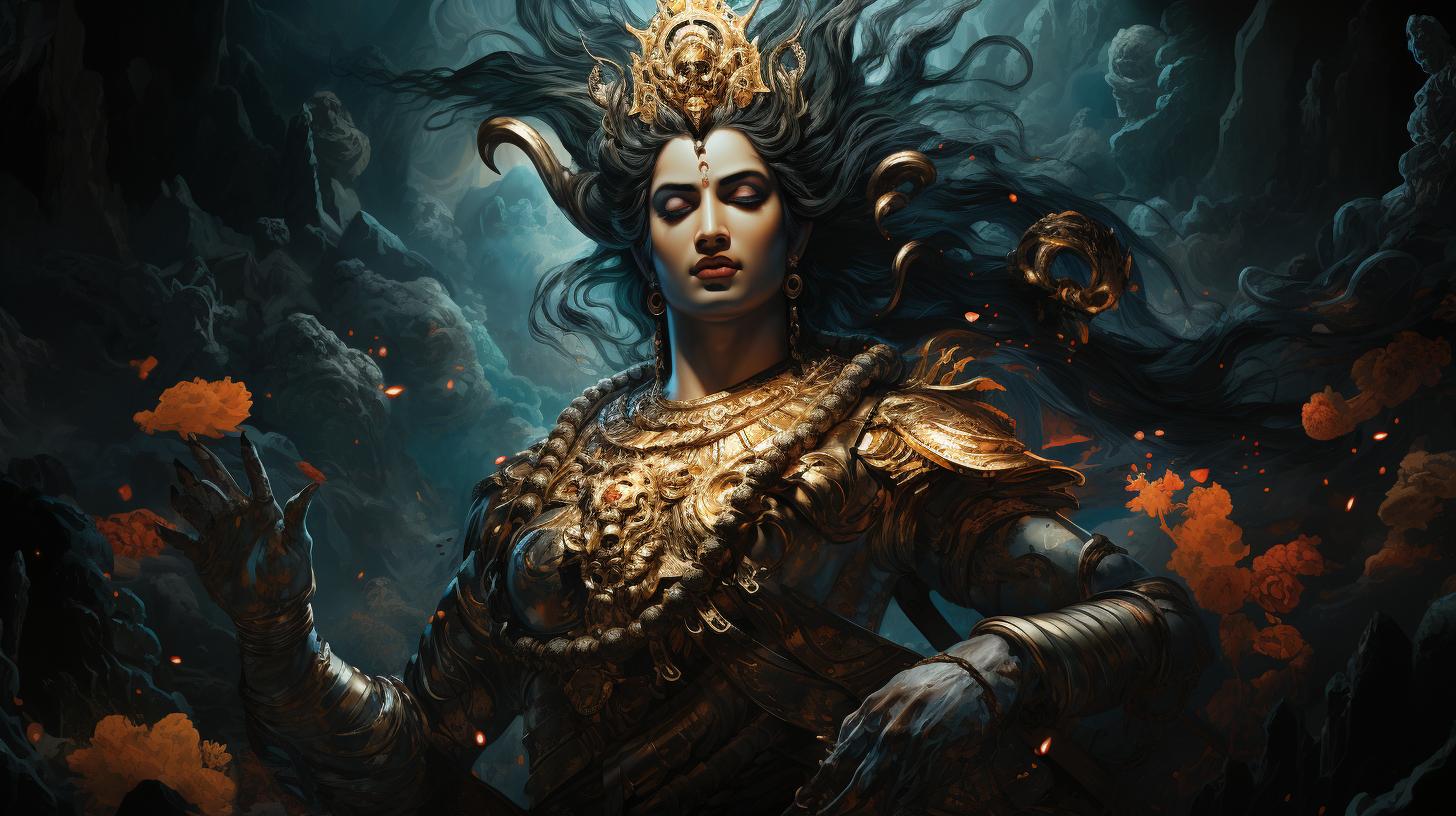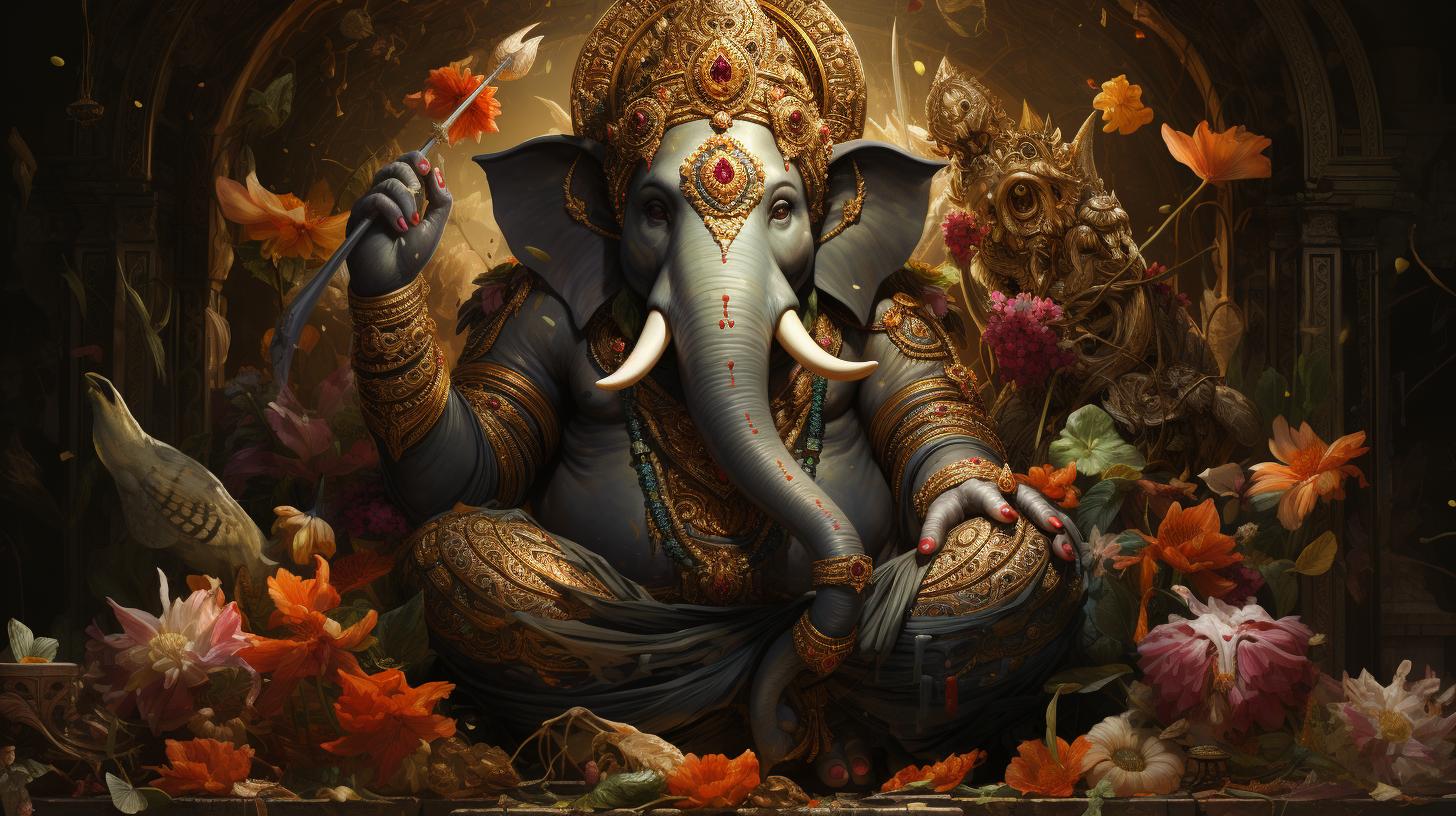Chandra: Hindu God of the Moon – Unveiling the Mysteries of the Celestial Deity
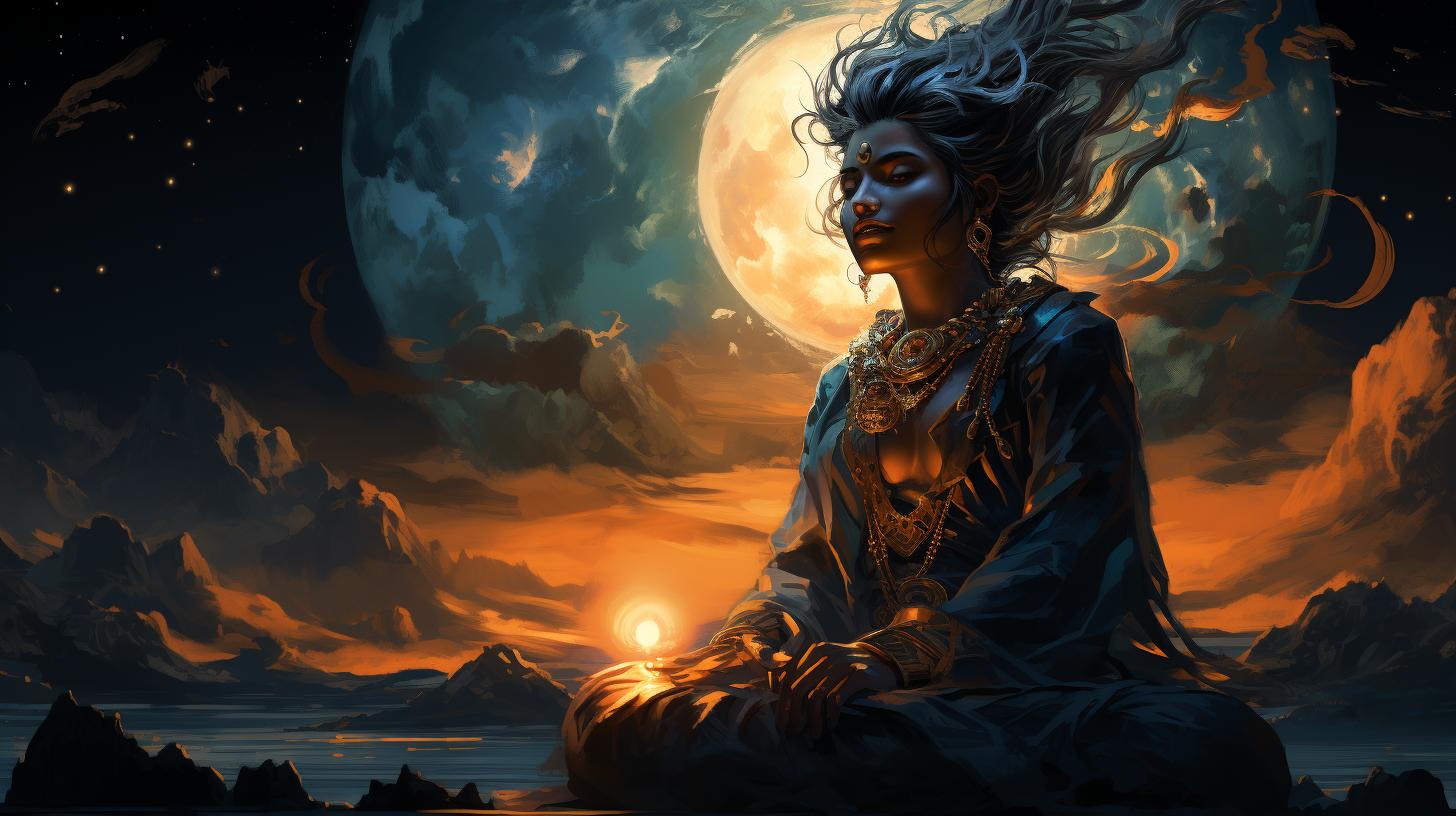
Chandra, the Hindu god of the moon, holds a significant role in Vedic texts and the lunar calendar. Associated with deities like Soma and Brihaspati, Chandra’s symbolism and worship are explored in this article.
Additionally, Chandra’s mythological connection with Ganesha and interactions with other gods, such as Shiva and Surya, provide insights into the cosmic harmony. Depicted in art and iconography, Chandra’s astrological significance and rituals add further depth to our understanding of this celestial deity.
Chandra: Hindu God of the Moon
Chandra, the Hindu god of the moon, holds a significant place in Vedic texts and mythology. His origins and deep-rooted significance trace back to ancient scriptures, where he is revered as a celestial deity.
Chandra’s enchanting influence over the moon has captivated people for centuries, inspiring devotion and exploration of his multifaceted attributes.
Origins and Significance in Vedic Texts
In Vedic texts, Chandra is described as the son of Sage Atri and his wife Anasuya. He emerged during the churning of the cosmic ocean, portraying him as a divine being associated with creation and rebirth.
Chandra’s presence in Vedic literature signifies his importance and celestial status, often regarded as a symbol of tranquility, beauty, and divine grace.
Chandra’s Relationship with Soma and Brihaspati
Chandra shares a deep connection with Soma, the divine nectar associated with the moon’s essence. Soma holds immense spiritual and medicinal significance, and Chandra’s association with it signifies his influence over the rejuvenating powers of the moon.
Additionally, Chandra is closely linked with Brihaspati, the Hindu god of wisdom and eloquence. Their harmonious alliance suggests the interplay of intellect and emotional sensitivity.
Chandra’s Role in the Lunar Calendar
The lunar calendar, known as the Chandra Maas, revolves around the phases and movements of the moon.
Chandra’s role in this calendar system is crucial, providing a celestial navigation guide for various religious observances and rituals. The waxing and waning phases of the moon as dictated by Chandra’s influence play a significant role in determining auspicious timings for ceremonies and festivals.
Chandra, the Hindu god of the moon, encompasses rich symbolism, mythological connections, and cosmic significance. Exploring his divine presence brings forth a deeper understanding of the cultural heritage surrounding the lunar deity.
The Mythological Connection: Chandra and Ganesha
The relationship between Chandra, the Hindu god of the moon, and Ganesha, the beloved elephant-headed deity, holds great significance in Hindu mythology. This section explores their connection, including Chandra’s influence on Ganesha’s birth and the symbolism and rituals associated with their divine bond.
Chandra’s Influence on Ganesha’s Birth
According to ancient legends, Chandra played a crucial role in Ganesha’s creation. It is believed that when Lord Shiva’s wife, Parvati, fashioned Ganesha out of turmeric paste, she infused divine energy into him.
Upon seeing Ganesha’s radiant form, Chandra was immensely captivated and gazed at him without blinking.
Chandra’s continuous gazing caused Ganesha’s head to burn with intensity. To alleviate the situation, Lord Shiva replaced Ganesha’s head with that of an elephant, thus granting him a unique appearance and his distinctive wisdom.
Symbolism and Rituals: Ganesha and Chandra
The connection between Ganesha and Chandra is steeped in symbolism and celebrated through various rituals. Here are some key aspects:
- Chandra’s Influence: Ganesha’s association with Chandra symbolizes the interplay between the mind and emotions.
Chandra’s calming presence is said to enhance Ganesha’s intellect and spiritual growth.
- Crescent Moon: Ganesha, often depicted with a crescent moon adorning his forehead, represents Chandra’s presence and signifies illumination, peace, and tranquility.
- Festival Celebrations: During the Vinayaka Chaturthi festival, devotees offer prayers to Ganesha, showcasing their reverence for both deities.
This occasion commemorates the birth of Ganesha and his connection to Chandra.
- Moon Worship: Some rituals involve offering prayers to Chandra alongside Ganesha, invoking their combined blessings for wisdom, harmony, and success.
Exploring the mythological connection between Chandra and Ganesha sheds light on the intricate symbolism and rituals observed in Hindu culture, highlighting the deep-rooted spiritual significance they hold.
Chandra’s Associations with Other Deities
Chandra, the Hindu god of the moon, has significant associations with various other deities, showcasing the interconnectedness of the Hindu pantheon. Let’s explore some of these fascinating associations and unravel the cosmic harmony and interactions surrounding Chandra.
Chandra and Shiva: Cosmic Harmony and Interactions
Chandra shares a profound relationship with Shiva, the supreme god in Hinduism. According to mythology, Chandra is believed to adorn Lord Shiva’s forehead as a crescent moon. This sacred symbol represents the interplay between the divine masculine and feminine energies, with the moon serving as a reminder of the supreme power of Shiva.
Chandra’s influence on Shiva goes beyond symbolism.
It is said that Chandra’s waxing and waning phases directly affect the tides of the oceans and the rhythms of life on Earth, mirroring the dual nature of existence. This intricate connection reveals the harmonious dance between Chandra and Shiva, signifying balance and creation.
Chandra in the Context of Budha and Brahma
In Hindu mythology, Chandra also holds a distinct position in relation to Budha (Mercury) and Brahma, the creator of the universe. Chandra is believed to be Budha’s father, symbolizing the transmission of knowledge and intelligence from the divine celestial realms to earthly beings.
Additionally, Chandra’s connection with Brahma highlights his association with the cyclical nature of life and creation.
The Sun and the Moon: Surya’s Relation with Chandra
Chandra’s relationship with Surya, the sun god, holds deep significance in Hindu mythology. As Surya’s sister, Chandra represents the feminine energy that provides balance and aids in maintaining cosmic order.
The constant interplay between the sun and the moon reflects the eternal dance of light and darkness, symbolizing the cyclical nature of life, death, and rebirth.
In conclusion, Chandra’s associations with other deities showcase the intricate web of interconnections within Hindu mythology.
Whether it’s the cosmic harmony with Shiva, the familial bond with Budha and Brahma, or the balancing act with Surya, Chandra’s role in the divine pantheon is inseparable.
These associations deepen our understanding of the cosmic forces at play and highlight the rich tapestry of Hindu religious beliefs.
- Chandra and Shiva: Cosmic Harmony and Interactions
- Chandra in the Context of Budha and Brahma
- The Sun and the Moon: Surya’s Relation with Chandra
Understanding Chandra’s Symbolism and Worship
Depiction of Chandra in Art and Iconography
Chandra, the Hindu god of the moon, is often depicted in art and iconography with distinct characteristics.
In visual representations, Chandra is portrayed with fair complexion, adorned with a crown or headdress symbolizing his divine status. He is often depicted holding a lotus flower, representing purity and beauty.
The moon, symbolizing Chandra, is depicted in varying phases and is accompanied by celestial beings and motifs.
Chandra’s Worship: Rituals and Practices
Devotees of Chandra engage in various rituals and practices to express their reverence and seek blessings. Regular worship of Chandra includes offering prayers, reciting mantras, and performing aarti (a ritual of offering light).
These rituals are often performed on Mondays, as Chandra is associated with this day. Devotees also observe fasts, especially on full moon days, to show their devotion to Chandra.
Furthermore, special festivals dedicated to Chandra, such as Chandra Grahan (lunar eclipse) and Karva Chauth, are celebrated with great enthusiasm.
During these occasions, devotees gather to perform specific rituals, seek blessings, and offer prayers to Chandra.
Insights into Chandra’s Astrological Significance
Chandra, as the ruler of the moon, plays a significant role in Hindu astrology. The placement and movement of Chandra in an individual’s birth chart are believed to influence their emotions, mind, and overall well-being.
The position of Chandra during important life events, such as marriage or starting a new venture, is carefully considered by astrologers.
Chandra also represents the feminine energy and is associated with the motherly instincts and nurturing qualities.
The moon’s waxing and waning influence our emotions and mental state, highlighting Chandra’s connection with our inner selves.
Understanding the astrological significance of Chandra allows individuals to gain valuable insights into their emotional nature and make informed decisions in various aspects of life.

